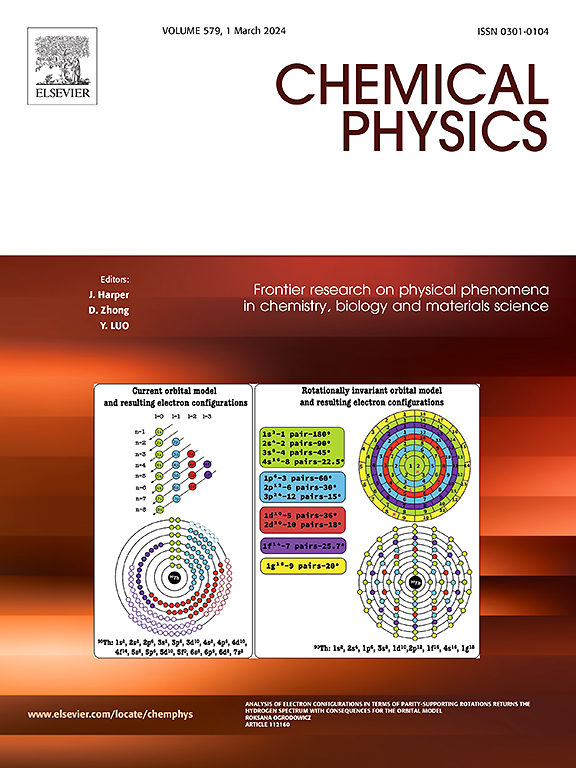近红外激光在O2气体中产生折射率光栅:单分子和双分子吸收和碰撞弛豫的作用
IF 2
3区 化学
Q4 CHEMISTRY, PHYSICAL
引用次数: 0
摘要
利用1064 nm的纳秒激光脉冲,在常温下的纯氧环境中激发分子,产生激光诱导光栅(LIGs)。在大气压下,在不同的激光频率下,在O2单体的O2(a 1Δg, υ = 1)←O2(X 3Σg−,υ = 0)吸收带的RR(11)跃迁周围,以及在固定频率下的宽压力范围(1 - 130 bar)内创建了LIGs。采用衍射连续波激光辐射探测LIGs。所提出的模型表明,除了电致伸缩外,在很小的延迟(0-2 μs)下,由于O2-O2二醇的辐射吸收和随后激光激发的物质击穿,伴随着电子和振动激发的O2单体的碰撞出现,分子种类与环境之间的“瞬时”能量碰撞交换还形成了LIGs。在大延迟(20-1000 μs)下,LIGs是由产生的激发单体的“缓慢”碰撞弛豫产生的。本文章由计算机程序翻译,如有差异,请以英文原文为准。
Near-IR range laser generation of refractive index gratings in O2 gas: Role of mono- and bimolecular absorption and collisional relaxation
Laser-induced gratings (LIGs) were generated in neat O2 at ambient temperature by photoexcitation of molecular species with nanosecond laser pulses at 1064 nm. LIGs were created at atmospheric pressure at different laser frequencies around that of the RR(11) transition of the O2(a 1Δg, υ = 1) ← O2(X 3Σg−, υ = 0) absorption band of O2 monomers, and over a wide pressure range (1–130 bar) at a fixed frequency. LIGs were probed by diffracting continuous wave laser radiation.
The proposed modeling indicates that at small delays (0–2 μs) LIGs are formed, in addition to electrostriction, by “instantaneous” collisional exchange of energy between the molecular species and the environment resulting from radiation absorption by O2-O2 dimols and the subsequent breakdown of the laser-excited species, with collisional emergence of electronically and vibrationally excited O2 monomers. At large delays (20–1000 μs), LIGs are created by the “slow” collisional relaxation of the produced excited monomers.
求助全文
通过发布文献求助,成功后即可免费获取论文全文。
去求助
来源期刊

Chemical Physics
化学-物理:原子、分子和化学物理
CiteScore
4.60
自引率
4.30%
发文量
278
审稿时长
39 days
期刊介绍:
Chemical Physics publishes experimental and theoretical papers on all aspects of chemical physics. In this journal, experiments are related to theory, and in turn theoretical papers are related to present or future experiments. Subjects covered include: spectroscopy and molecular structure, interacting systems, relaxation phenomena, biological systems, materials, fundamental problems in molecular reactivity, molecular quantum theory and statistical mechanics. Computational chemistry studies of routine character are not appropriate for this journal.
 求助内容:
求助内容: 应助结果提醒方式:
应助结果提醒方式:


